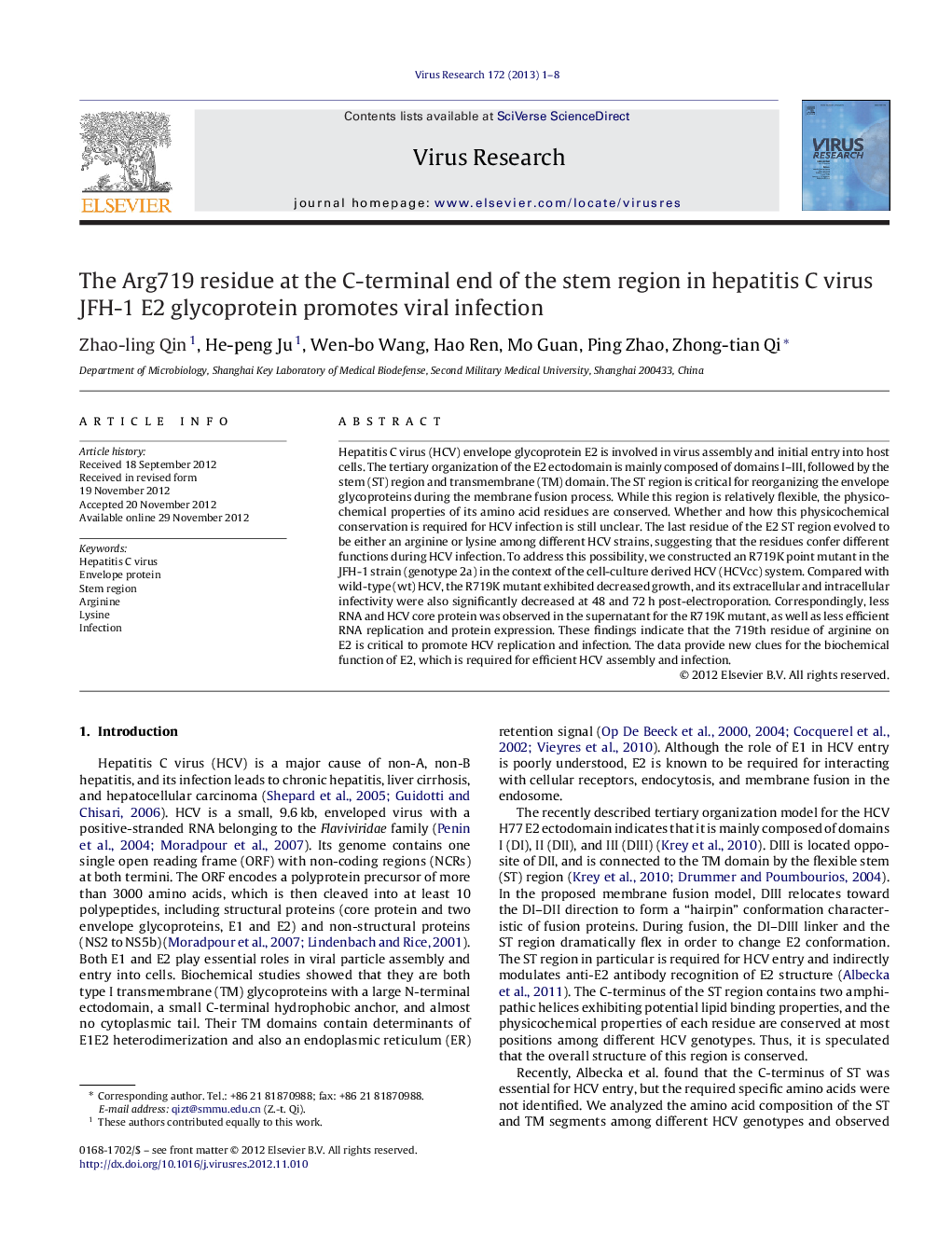| Article ID | Journal | Published Year | Pages | File Type |
|---|---|---|---|---|
| 3428561 | Virus Research | 2013 | 8 Pages |
Hepatitis C virus (HCV) envelope glycoprotein E2 is involved in virus assembly and initial entry into host cells. The tertiary organization of the E2 ectodomain is mainly composed of domains I–III, followed by the stem (ST) region and transmembrane (TM) domain. The ST region is critical for reorganizing the envelope glycoproteins during the membrane fusion process. While this region is relatively flexible, the physicochemical properties of its amino acid residues are conserved. Whether and how this physicochemical conservation is required for HCV infection is still unclear. The last residue of the E2 ST region evolved to be either an arginine or lysine among different HCV strains, suggesting that the residues confer different functions during HCV infection. To address this possibility, we constructed an R719K point mutant in the JFH-1 strain (genotype 2a) in the context of the cell-culture derived HCV (HCVcc) system. Compared with wild-type (wt) HCV, the R719K mutant exhibited decreased growth, and its extracellular and intracellular infectivity were also significantly decreased at 48 and 72 h post-electroporation. Correspondingly, less RNA and HCV core protein was observed in the supernatant for the R719K mutant, as well as less efficient RNA replication and protein expression. These findings indicate that the 719th residue of arginine on E2 is critical to promote HCV replication and infection. The data provide new clues for the biochemical function of E2, which is required for efficient HCV assembly and infection.
► We investigate the role of the last arginine of E2 ST region in HCV infection. ► We construct the R719K mutant in the context of HCVcc system. ► The R719K mutant exhibits decreased growth and viral infectivity significantly. ► Less RNA replication and protein expression was observed for the R719K mutant. ► The 719th arginine on E2 is critical to promote HCV replication and infection.
